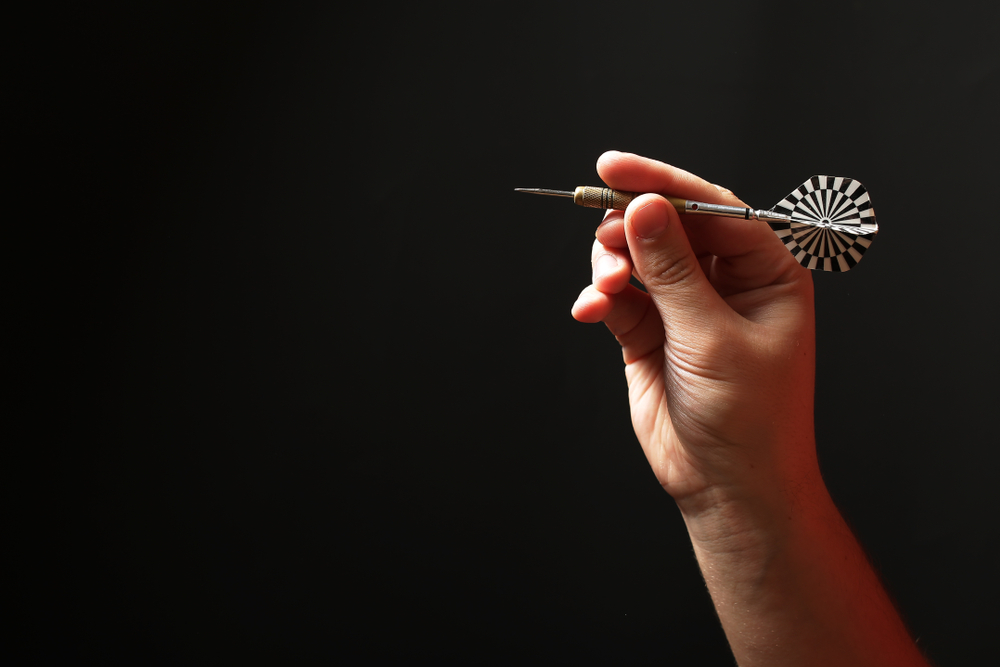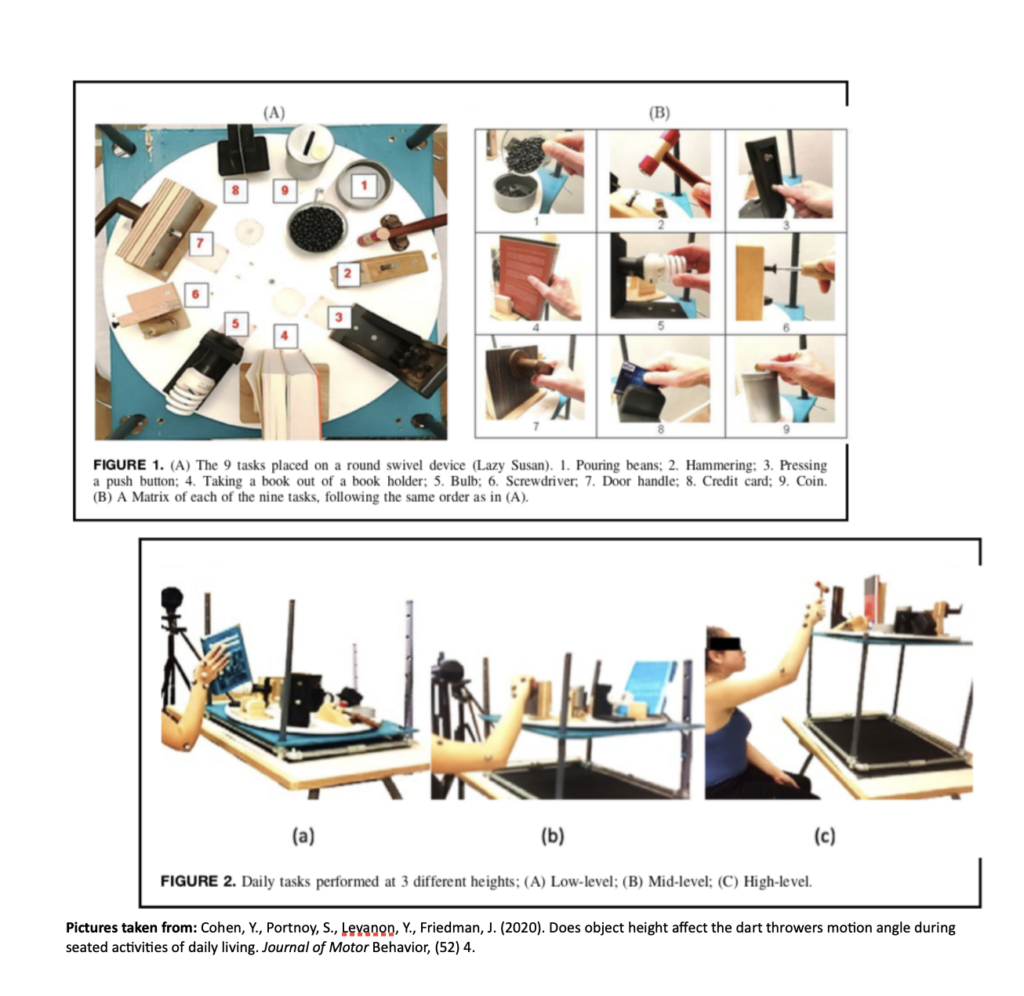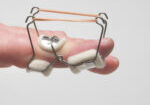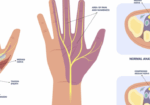Dart-throwing Angle in Hand Therapy for Scapholunate (SL) Ligament Injuries.
Filed under Treatments
Does Object Height Affect the Dart Throwing Motion Angle During Seated Activities of Daily Living? Cohen, Y., Portnoy, S., Levanon, Y., Friedman, J. (2020). Does object height affect the dart throwers motion angle during seated activities of daily living. Journal of Motor Behavior, (52) 4.
Article Review By: Rita Steffes

The Skinny:
Dart Throwers Motion (DTM) is the movement of radial extension to ulnar flexion and is a commonly used movement pattern used for patients in hand therapy with wrist instability and those with SL ligament injuries. This study aimed to examine the relationship of DTM plane of movement and limb positions during activities of daily living.
In the weeds:
In this study, 40 right-hand dominant participants were asked to complete nine tasks of daily living while seated that required DTM. The participants completed each task 3 times at a different height. Participants were recorded when completing each task with a precise motion camera with a 3-D tracking system to calculate the relation of motion between the distal and proximal segments.
The 9 tasks:
1. Pouring beans from a cup with a side handle
2. Hammering into a wooden board on a 45-degree slant
3. Pressing the push button with the thumb
4. Taking a book out of a bookholder
5. Rotating a light bulb socket fixed into a vertical wooden plank
6. Using a screwdriver to tighten screws in the vertical wooden fixture
7. Pushing down a door handle
8. Sliding a credit card through the machine slot
9. Inserting coins through a slot in a tin can

Bringing it home:
The results of this study showed that object height made a significant impact on DTM plane. In activities completed at the low-level, DTM was greater and decreased as the height of the activities increased. Results of this study also showed that in the sagittal plane, increased shoulder flexion significantly decreased the DTM plane. However, in the coronal plane, increased shoulder flexion increased DTM plane. Overall, this study found that a change of shoulder angles by 10 degrees or more leads to a -2.2-4.1 degree change in DTM.
Rating: 4/5
Overall, this was a very interesting and uniquely studied DTM in hand therapy. The findings of this study can overall improve therapy services for individuals following wrist instability and SL ligament injuries by providing different ways to modify activities for the best patient care. This study also can help make recommendations within a patient’s HEP with any ADL tasks they may report increased pain with completion.
More To Read
Wound Healing in Hand Therapy
By: Maddie Mott Wound healing (healing hand therapy) involves a complex series of interactions between different cell types, cytokine mediators, and the extracellular matrix with its four basic stages including hemostasis, inflammation, proliferation, and remodeling (Mackay & Miller, 2003). Because successful wound healing requires adequate blood and nutrients to be supplied to the site of…
Read MoreUse of Proprioception in Rotator Cuff Repair
Article Review By Brittany Day Upper Limb Active Joint Repositioning During a Multijoint Task in Participants with and without Rotator Cuff Tendinopathy and Effect of a Rehabilitation Program Pairot de Fontenay, Benoit, Mercier, Catherine, Bouyer, Laurent, Savoie, Alexandre, & Roy, Jean-Sébastien. (2019). Upper limb active joint repositioning during a multijoint task in participants with and…
Read MoreManagement of the Stiff Finger: Evidence and Outcomes
Title: Management of the Stiff Finger: Evidence and Outcomes Reference: Yang, G., McGlinn, E. P., & Chung, K. C. (2014). Management of the stiff finger: Evidence and outcomes. Clinics in Plastic Surgery, 41(3), 501–512. https://doi.org/10.1016/j.cps.2014.03.011 Article Review By: Tommi Hintnaus The Skinny: This study focuses on understanding and managing finger stiffness, a condition characterized by…
Read MoreCarpal Tunnel Release: Outcomes of Pediatric and Adolescent
Rapid Review. Outcomes of pediatric and adolescent carpal tunnel release based on etiology. Velicki, K., Goldfarb, C. A., Roberts, S., & Wall, L. B. (2021). Outcomes of pediatric and adolescent carpal tunnel release. The Journal of Hand Surgery, 46(3), 178-186. The Skinny: Less than 1% of pediatric carpal tunnel is idiopathic in nature, compared to…
Read MoreSign-up to Get Updates Straight to Your Inbox!
Sign up with us and we will send you regular blog posts on everything hand therapy, notices every time we upload new videos and tutorials, along with handout, protocols, and other useful information.






